When shooting with a mirrorless camera, one of the most fundamental concepts to grasp is focal length. This lens specification greatly influences the angle of view, depth of field, and the appearance of bokeh in your images. Whether you’re capturing expansive landscapes or tight portraits, knowing how focal length affects your photos can help you make better creative decisions.
Each lens has a specific focal length that determines how much of the scene will be captured and how magnified your subject will appear. As you choose lenses, it’s important to understand how changing the focal length alters the field of view. By mastering these basics, you can better control composition, focus, and visual impact.
What You Will Learn In This Article:
- What focal length is and how it affects angle of view and image composition
- The difference between wide-angle, standard, and telephoto lenses
- How focal length influences depth of field and background blur
- What “35mm equivalent” means and how sensor size impacts focal length
- How to choose the right Tamron zoom lens based on focal length and shooting style
What Is Focal Length in Photography and Why It Matters
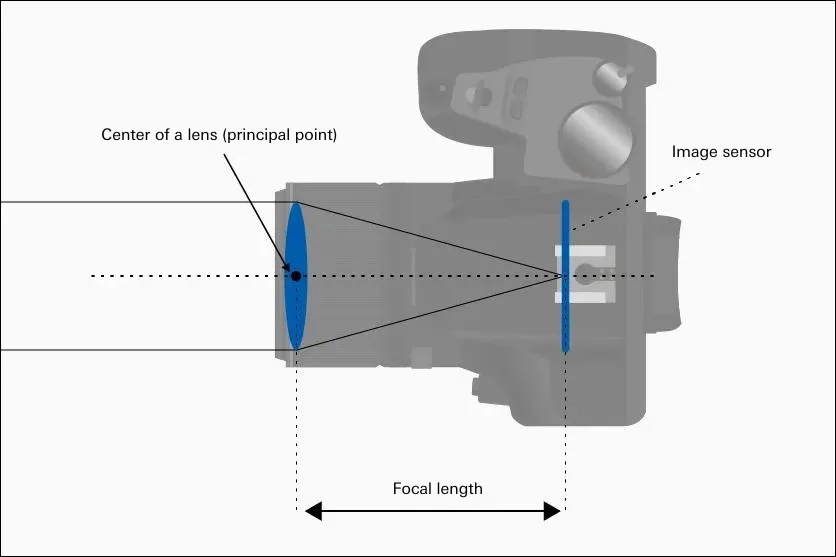
When light enters a lens, the place where the light gathers at a single point is called the focal point. Light travels in a straight line, but when it passes through a lens it is refracted and concentrated at a single point (focal point). When light that has passed through a lens gathers at a single point it forms an image, and if an imaging element (image sensor) is placed at that position, the image can be captured.
In a camera, the distance from the center of the lens (principal point) to the imaging element is called the focal length, and it is an important value that characterizes a lens.
What the ‘mm’ on a Camera Lens Means: Understanding Focal Length
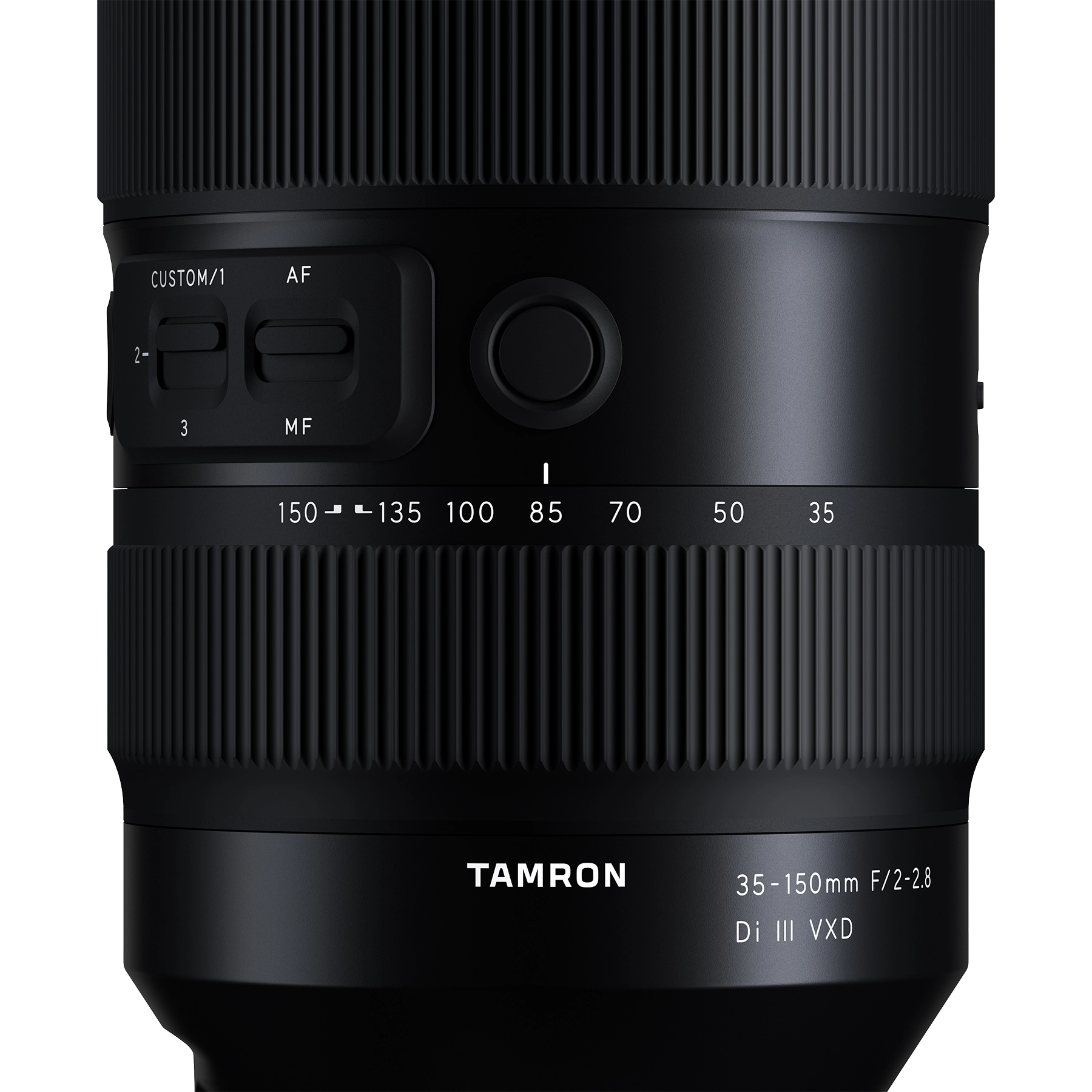
Every camera lens has a focal length, which is typically indicated in the product name. For example, in a lens labeled “28-75mm F/2.8”, the numbers “28-75mm” refer to the focal length range. This tells you the lens can zoom from a wide 28mm view to a tighter 75mm perspective.
There are two types of lenses: prime lenses with a fixed focal length and zoom lenses with adjustable focal length. If there is a range of focal lengths, such as “28-75mm”, it is a zoom lens. For prime lenses, the focal length is written as a single number, such as “20mm”.
Example of a zoom lens: 28-75mm F/2.8 Di III VXD G2 (Model A063)
Example of a prime lens: 20mm F/2.8 Di III OSD M1:2 (Model F050)
The focal length value and the range (angle of view) vary depending on the sensor size. This explanation here is based on the full-frame sensor size.
How Focal Length Affects Angle of View and Composition
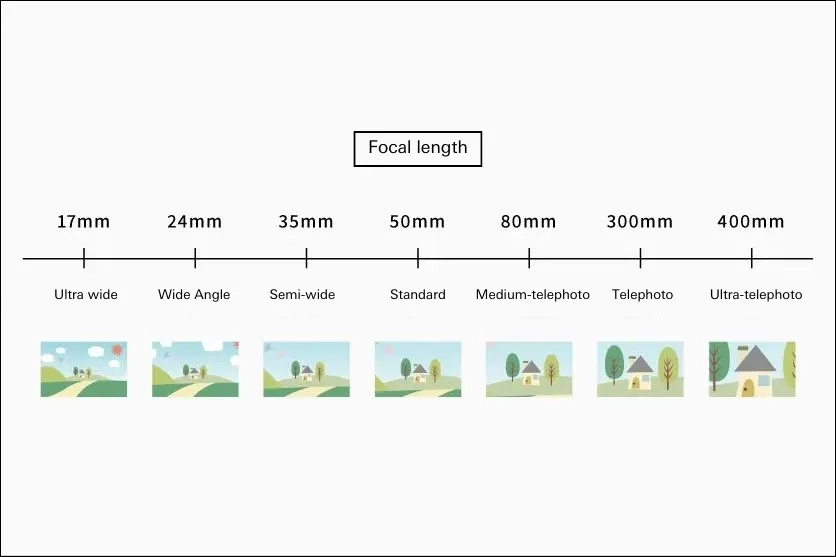
An important point about focal length is that it directly affects the angle of view—the range that the camera captures through the lens, measured in degrees. The wider the angle of view, the more of the scene the camera can include in the frame. Conversely, a narrower angle of view captures a smaller portion of the scene, magnifying the subject more.
Lenses are generally classified into three types based on their focal length: wide-angle, standard, and telephoto. Standard lenses offer a field of view similar to that of the human eye. Lenses with a wide angle of view are called wide-angle lenses, while those with a narrower angle are referred to as telephoto lenses.
As a general guideline, lenses with a focal length of 35mm or less are considered wide-angle, those around 50mm are standard, and lenses of 80mm or more are categorized as telephoto.
Two Images Shot with the Same Lens
Let’s explore how varying the angle of view changes the mood and composition of a photo. Take, for example, these two portraits captured with the Tamron 35-150mm F/2-2.8 Di III VXD (Model A058) at different focal lengths.
Using the Wide End of the Lens
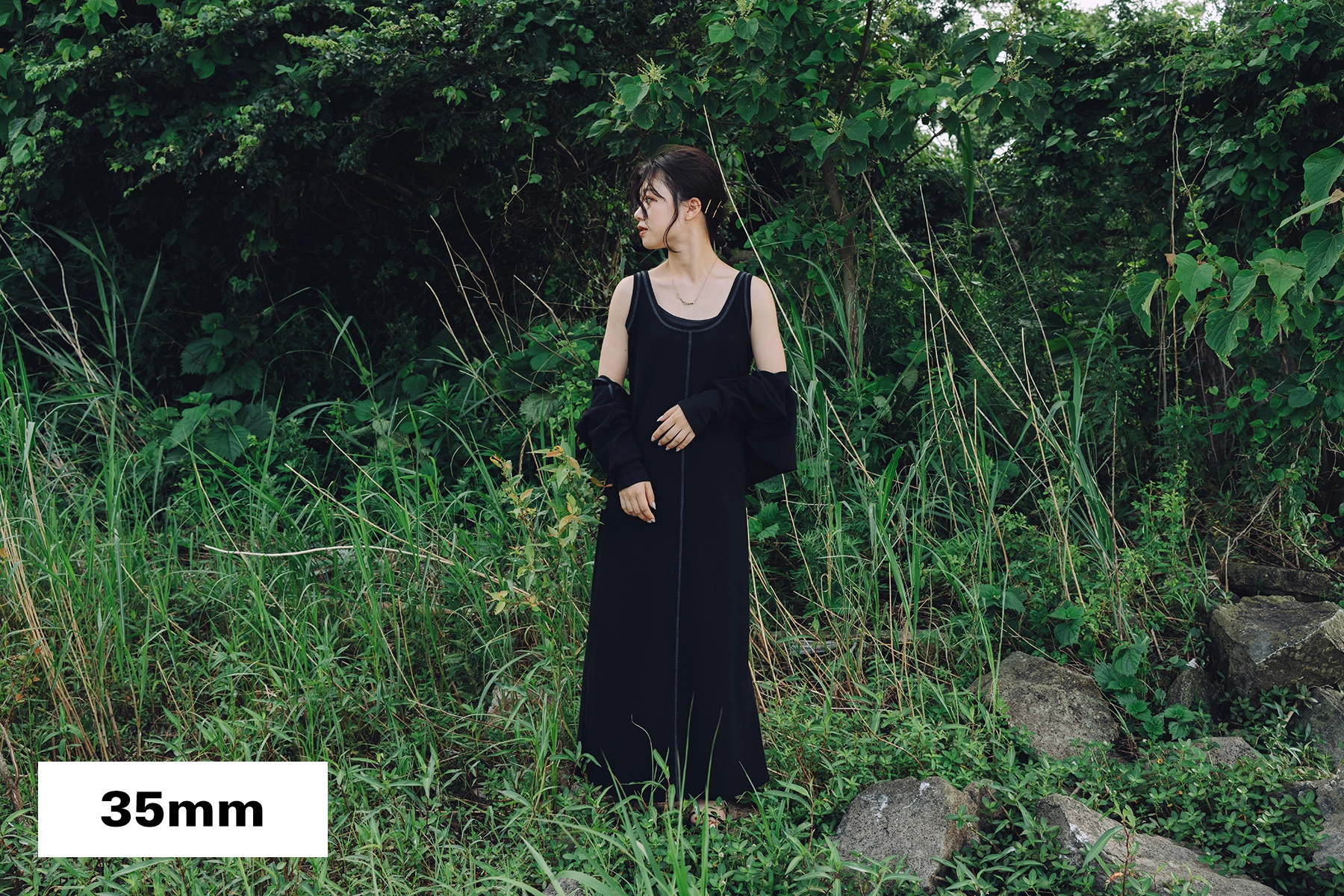
Using the wide end (35mm), the photo captures both the subject and surroundings, providing a sense of place, often referred to as an environmental portrait.
Using the Tele End of the Lens
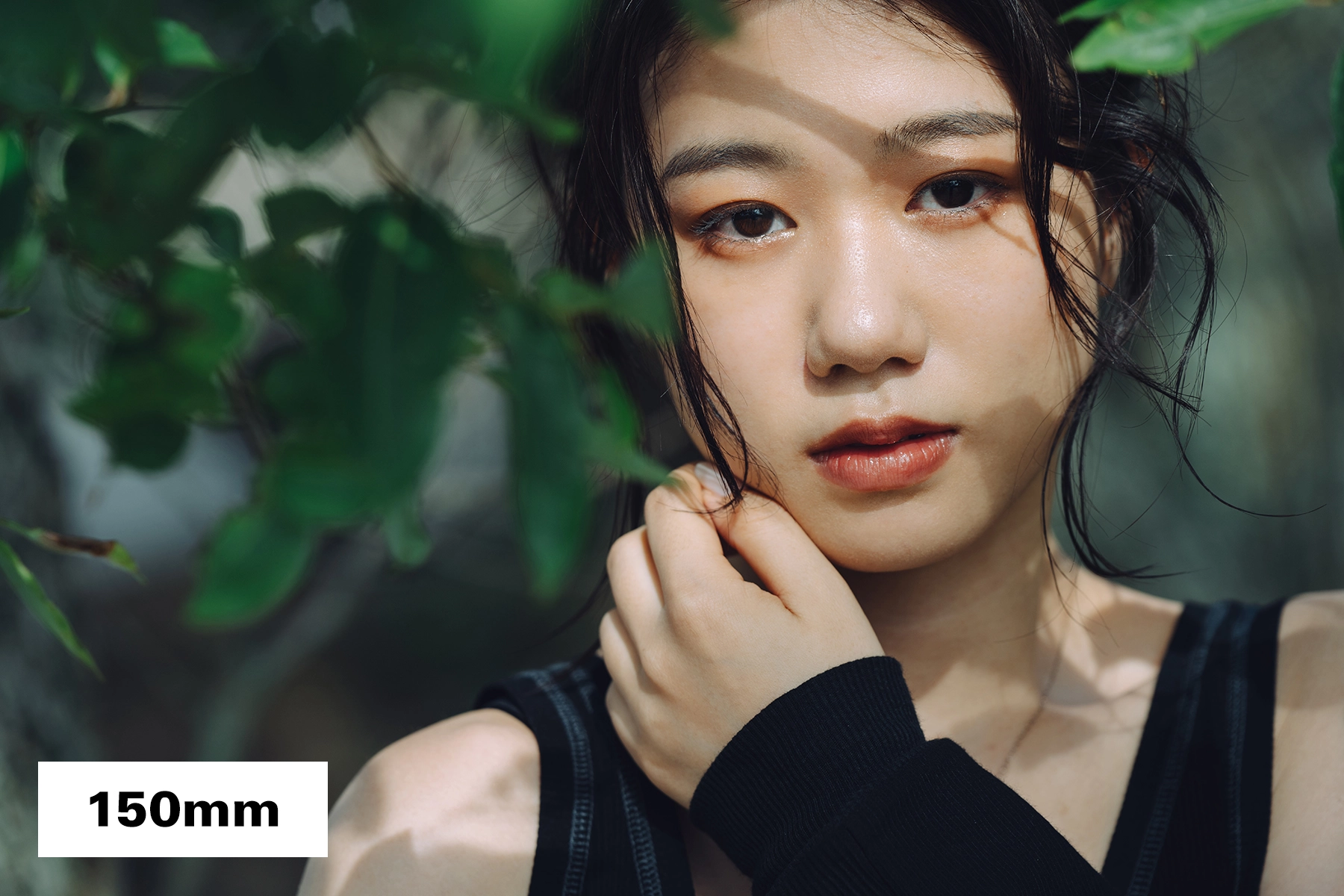
In contrast, at the telephoto end (150mm), the subject’s facial expression becomes the focal point, with a beautifully blurred foreground that provides a professional look.
This demonstrates how adjusting the focal length on a zoom lens lets you control the angle of view and create photos with distinctly different impressions.
How Focal Length Influences Depth of Field and Background Blur
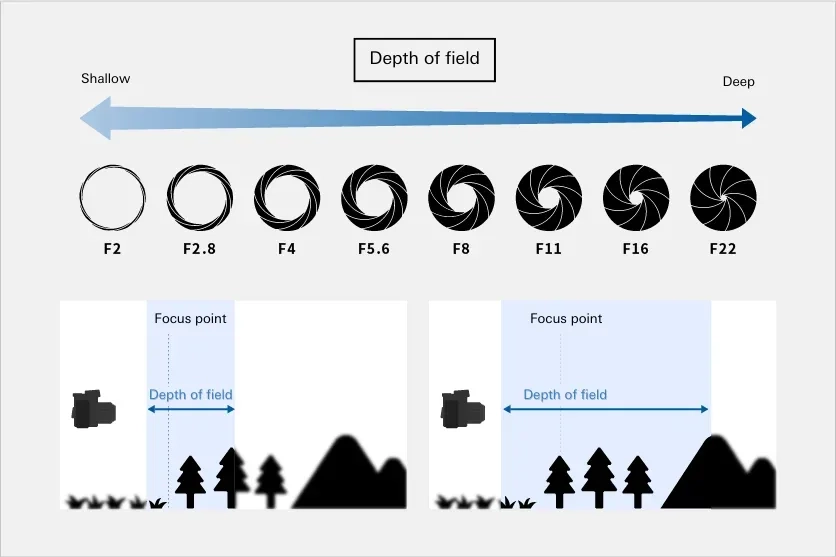
Another key aspect of focal length is its effect on depth of field—the range within an image that appears in focus. A deep depth of field makes it easier to keep both the subject and background sharp. In contrast, a shallow depth of field allows only the area around the subject to remain in focus, while the background becomes attractively blurred.
The shorter the focal length and the narrower the aperture (i.e., a larger F-number), the deeper the depth of field. This is why wide-angle lenses are often ideal for landscape photography—their short focal length naturally produces a deeper depth of field, allowing both the foreground and background details to appear clearly in focus.
In contrast, telephoto lenses have a longer focal length and a shallower depth of field, which results in more pronounced background blur. This effect helps isolate the subject from the background, making telephoto lenses especially effective for portraits that emphasize the subject’s expression and presence.
What Is 35mm Equivalent Focal Length? Full-Frame vs. APS-C Explained
As we’ve seen, focal length is a key specification in any lens—but when selecting a lens, it’s also important to consider the sensor size of your camera body.
The two most common types of sensors are Full-frame (sometimes referred to as 35mm full-frame) and APS-C. A full-frame sensor measures 36.0mm x 24.0mm (the same size as 35mm film) and, due to its larger size, is capable of capturing more information to produce richer images. In contrast, an APS-C sensor typically measures around 23.5mm x 15.6mm (APS-C sensor dimensions may vary slightly depending on the camera manufacturer), offering a smaller capture area and a narrower field of view.
How to Select A Lens for Your Camera’s Sensor Size
Because of this difference, it’s essential to use a lens that matches your camera’s sensor size. Lenses are designed with specific sensor compatibility, so be sure to select one that fits your camera system.
Focal length and angle of view are also affected by sensor size. Most lens specifications are based on full-frame standard. When using an APS-C sensor, the focal length needs to be converted to its full-frame equivalent to understand how it will behave. This process is known as full-frame conversion.
To calculate the equivalent focal length, you typically multiply the APS-C lens’s focal length by 1.5 (for brands like Sony and Nikon) or 1.6 (for Canon). This gives you an idea of how the lens will perform compared to a full-frame setup. Refer to the chart below to better understand the relationship between focal length and angle of view—a helpful guide when choosing a lens for your APS-C camera.
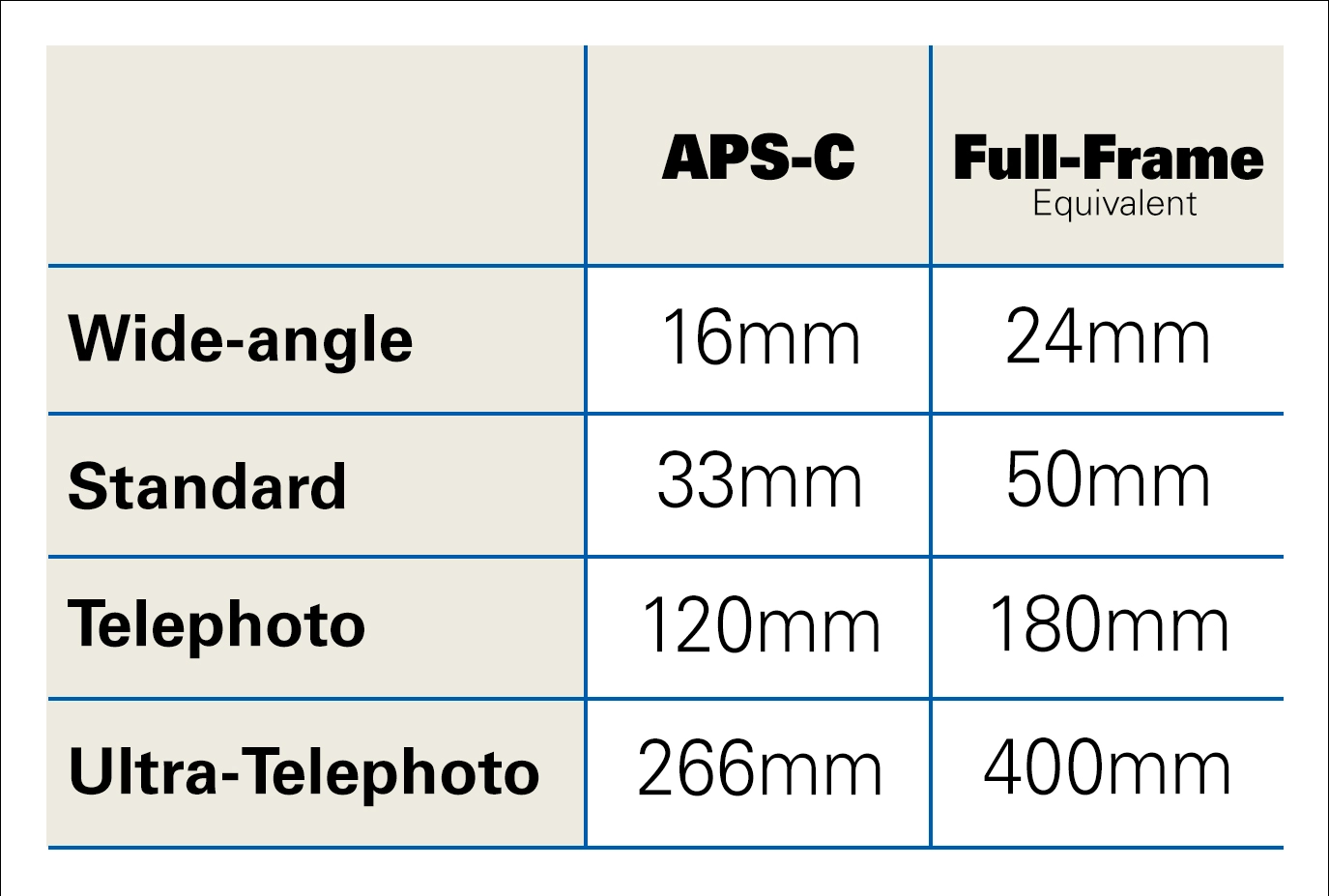
Relationship Between Focal Length and F-Number (Aperture Value)
In addition to focal length, F-number (aperture value) is also an important number that indicates the characteristics of a lens. The smaller the F-number, the more light is captured, broadening the scope of photography.
F-number is calculated by “focal length ÷ lens aperture.” The smaller the “maximum F-number” when the aperture is fully open, the brighter the lens will be. When choosing a lens, be sure to check the F-number as well as the focal length.
Recommended Tamron Zoom Lenses By Focal Length Category
Tamron’s zoom lenses cover a wide range of focal lengths with just one lens yet are small enough to be easily carried around . They also feature high image quality and close-up shooting capabilities . Be sure to find the lens that’s right for you.
Wide-angle Zoom Lenses
Wide-angle zoom lenses span from ultra-wide to standard focal lengths, making them highly versatile. With an ultra-wide-angle lens, you can capture expansive scenes even when shooting up close—perfect for photographing buildings, vehicles, or other large subjects with a dynamic perspective. These lenses also lend themselves to creative portraits or pet photography that play with exaggerated depth and scale.
Tamron’s lightweight, compact wide-angle lenses are especially well-suited for landscape photography, where portability matters. Whether you’re hiking long distances or shooting for extended periods, the reduced weight helps keep your gear manageable without sacrificing image quality.
Consider:
- 11-20mm F/2.8 Di III-A RXD (Model B060) for APS-C cameras
- 16-30mm F/2.8 Di III VXD G2 (Model A064) for full-frame cameras
- 17-50mm F/4 Di III VXD (Model A068) for full-frame cameras
Standard Zoom Lenses
A standard zoom lens typically centers around a 50mm focal length and spans a versatile range—from wide-angle to telephoto. This flexibility makes it ideal for a variety of shooting scenarios. Whether you’re capturing snapshots, portraits, landscapes at the wide end, or animals and architecture at the telephoto end, a standard zoom lens provides the coverage needed for everyday and creative photography alike.
Consider:
- 17-70mm F/2.8 Di III-A VC RXD (Model B070) for APS-C cameras
- 20-40mm F/2.8 Di III VXD (Model A062) for full-frame cameras
- 28-75mm F/2.8 Di III VXD G2 (Model A063) for full-frame cameras
- 35-150mm F/2-2.8 Di III VXD (Model A058) for full-frame cameras
Telephoto Zoom Lenses
Telephoto zoom lenses allow you to get much closer to distant subjects, making them perfect for capturing action-packed scenes such as sports events and athletic meets, as well as birds and wildlife in their natural habitat. They’re also great companions for trekking, backpacking, hiking, or mountain photography, letting you frame distant landscapes with clarity and visual impact.
In addition, fast telephoto lenses are highly recommended for creating striking portraits, thanks to their ability to produce beautiful background bokeh and a compression effect that flatters facial features and isolates the subject from the background.
Consider:
- 50-300mm F/4.5-6.3 Di III VC VXD (Model A069) for full-frame cameras
- 70-180mm F/2.8 Di III VC VXD G2 (Model A065) for full-frame cameras
- 70-300mm F/4.5-6.3 Di III RXD (Model A047) for full-frame cameras
Ultra Telephoto Zoom Lenses
Ultra telephoto zoom lenses are designed to magnify and capture distant subjects, making them ideal for long-distance photography. They’re perfect for photographing wild animals that can’t be approached, sporting events in large stadiums, and airplanes or trains from afar.
Combined with the natural compression effect and background bokeh unique to telephoto zooms, these lenses allow you to create visually striking, impactful images that draw the viewer’s attention to the subject.
Consider:
- 50-400mm F/4.5-6.3 Di III VC VXD (Model A067) for full-frame cameras
- 150-500mm F/5-6.7 Di III VC VXD (Model A057) for full-frame cameras
Note: Many users get extra reach from their telephoto and ultra-telephoto lenses by using a full-frame lens on an APS-C camera.
All-In-One Zoom Lenses
All-in-one zoom lenses offer a broad focal length range—from wide-angle to telephoto—in a single, versatile package. This makes them an excellent choice for travel photography, everyday snapshots, and family events, where switching lenses isn’t always practical. Whether you’re capturing expansive landscapes, portraits, or distant subjects like architecture or wildlife, an all-in-one zoom can handle a variety of scenes with ease.
Their convenience and portability make them ideal for photographers who want to stay light without sacrificing the ability to frame both wide and tight shots—all with one lens.
Consider:
- 18-300mm F/3.5-6.3 Di III-A VC VXD (Model B061) for APS-C cameras
- 28-200mm F/2.8-5.6 Di III RXD (Model A071) for full-frame cameras
- 28-300mm F/4-7.1 Di III VC VXD (Model A074) for full-frame cameras
Summary: Understanding Focal Length Helps You to Choose the Right Lenses
The focal length of a lens refers to the distance between the lens’s optical center (principal point) and the camera’s image sensor. It’s a key specification that determines the angle of view. A short focal length results in a wide-angle lens, a long focal length corresponds to a telephoto lens, and anything in between is considered a standard lens.
When selecting a lens, be sure to consider the focal length, as it plays a crucial role in how your subject and scene are captured. Choosing the right focal length helps you achieve the composition and perspective best suited to your creative vision.
Learn about Tamron lenses in every focal length category at an authorized Tamron dealer near you or visit the TAMRON Store.
